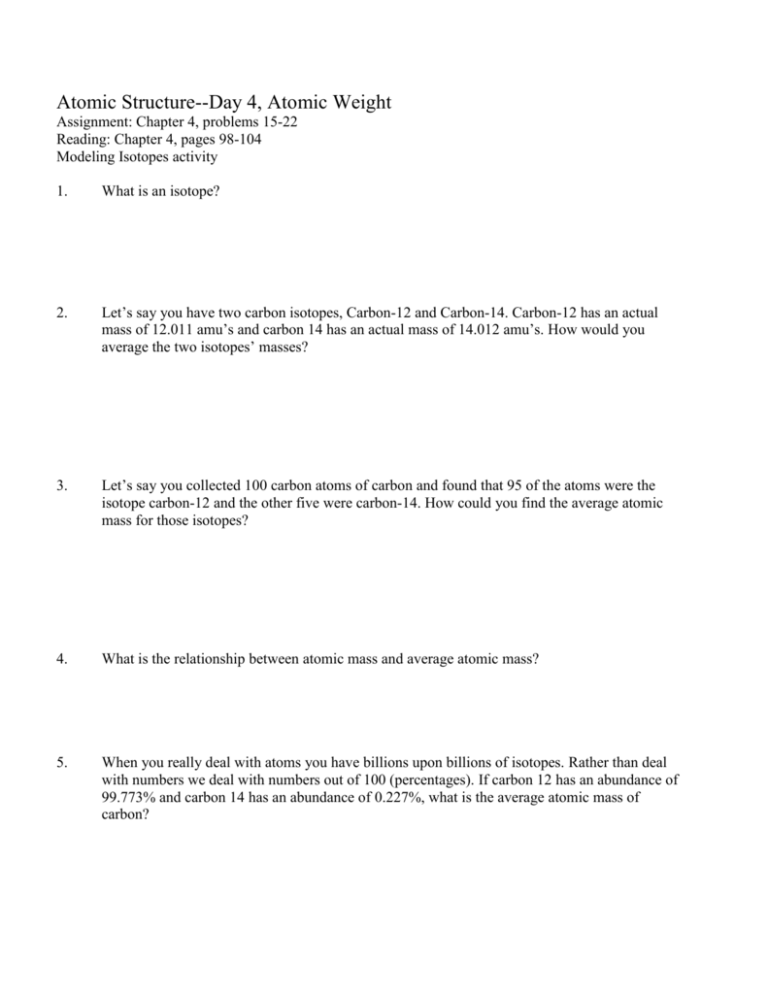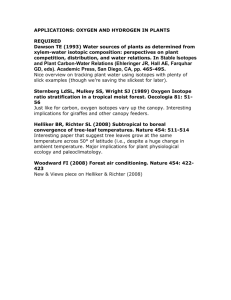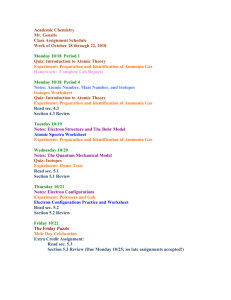Atomic Weight
advertisement

Atomic Structure--Day 4, Atomic Weight Assignment: Chapter 4, problems 15-22 Reading: Chapter 4, pages 98-104 Modeling Isotopes activity 1. What is an isotope? 2. Let’s say you have two carbon isotopes, Carbon-12 and Carbon-14. Carbon-12 has an actual mass of 12.011 amu’s and carbon 14 has an actual mass of 14.012 amu’s. How would you average the two isotopes’ masses? 3. Let’s say you collected 100 carbon atoms of carbon and found that 95 of the atoms were the isotope carbon-12 and the other five were carbon-14. How could you find the average atomic mass for those isotopes? 4. What is the relationship between atomic mass and average atomic mass? 5. When you really deal with atoms you have billions upon billions of isotopes. Rather than deal with numbers we deal with numbers out of 100 (percentages). If carbon 12 has an abundance of 99.773% and carbon 14 has an abundance of 0.227%, what is the average atomic mass of carbon? 6. Let’s say Potassium has two isotopes K-39 (which is 82.34% abundant) and K-40 (17.66%). The actual mass of these isotopes are 39.012 for K-39 and 40.033 for K-40. Determine the average atomic mass for these potassium isotopes. 7. Let’s say Cobalt has two isotopes Co-58 (which is 92.4% abundant), and Co-60 (7.6%). The actual mass of these isotopes are 58.031 for Co-58 and 60.524 for Co-60. Determine the average atomic mass for these uranium isotopes. 8. Let’s say Uranium has three isotopes U-235 (which is 12.34% abundant), U-238 (25.65%), and U-240 (62.01%). The actual mass of these isotopes are 235.06 for U-235, 238.17 for U-238, and 240.33 for U-240. Determine the average atomic mass for these uranium isotopes.









